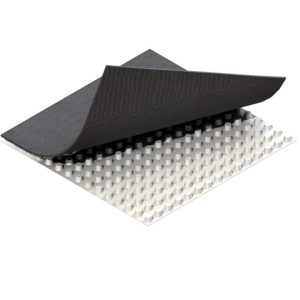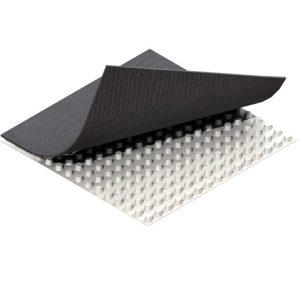
# Geomembranes: Applications and Advancements in Environmental Engineering
## Introduction to Geomembranes
Geomembranes are synthetic membranes used extensively in environmental engineering to control fluid migration in various structures. These impermeable sheets are made from materials such as high-density polyethylene (HDPE), low-density polyethylene (LDPE), polyvinyl chloride (PVC), and ethylene propylene diene monomer (EPDM). Their primary function is to provide a barrier against the movement of liquids, gases, and contaminants.
## Applications of Geomembranes
### Landfill Liners and Caps
One of the most common applications of geomembranes is in landfill liners and caps. They prevent leachate, a toxic liquid formed from decomposing waste, from seeping into the soil and groundwater. By acting as a barrier, geomembranes protect the environment from contamination and ensure compliance with environmental regulations.
### Water Containment
Geomembranes are widely used in water containment systems such as reservoirs, ponds, and canals. They help in preventing water loss through seepage and ensure efficient water storage. This is particularly important in arid regions where water conservation is critical.
### Mining Industry
In the mining industry, geomembranes are used in heap leach pads, tailings dams, and evaporation ponds. They prevent the leakage of harmful chemicals and heavy metals into the surrounding environment, thereby minimizing the ecological impact of mining operations.
### Agriculture
Geomembranes are also utilized in agricultural applications such as irrigation ponds, silage pits, and aquaculture ponds. They help in maintaining water quality and preventing soil erosion, contributing to sustainable agricultural practices.
## Advancements in Geomembrane Technology
### Enhanced Durability
Recent advancements in geomembrane technology have led to the development of more durable materials. Innovations such as reinforced geomembranes and multi-layered composites have increased their resistance to punctures, UV radiation, and chemical degradation. This extends their lifespan and reduces maintenance costs.
### Improved Installation Techniques
Modern installation techniques, including automated welding and advanced seam testing, have improved the reliability and effectiveness of geomembrane installations. These methods ensure a more secure and leak-proof barrier, enhancing the overall performance of geomembrane systems.
### Environmental Monitoring
The integration of sensors and monitoring systems within geomembrane liners allows for real-time detection of leaks and structural integrity. This proactive approach enables timely maintenance and reduces the risk of environmental contamination.
## Conclusion
Geomembranes play a crucial role in environmental engineering by providing effective barriers against fluid migration and contamination. Their applications span across various industries, including waste management, water conservation, mining, and agriculture. With ongoing advancements in material science and installation techniques, geomembranes continue to evolve, offering enhanced durability and performance. As environmental concerns grow, the importance of geomembranes in protecting our natural resources cannot be overstated.
Keyword: geomembranas

Comments are closed